What is Greater Bay Area Initiative
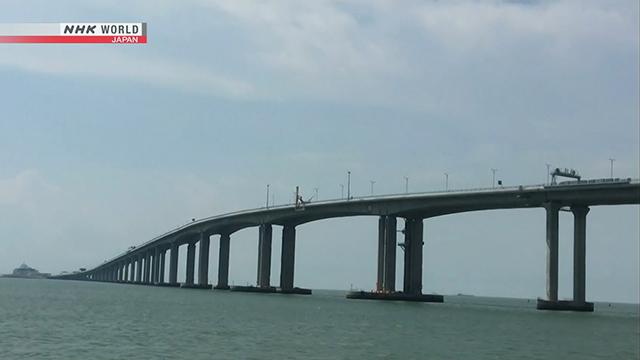
The Greater Bay Area Initiative is Chinese President Xi Jinping’s ambitious plan positioned by the National People’s Congress in March as a centerpiece of regional economic development. It integrates nine cities in the mainland’s Guangdong Province, the hub of the country’s manufacturing industry, with the financial-economic center of Hong Kong and the casino-studded tourist magnet of Macau. The government is hoping that the initiative will help power the country’s economic growth. The area has a population of 69 million people, with its GDP totaling 1.5 trillion dollars. That’s almost equal in size with the economy of South Korea or Russia. A British financial organization (HSBC) estimates that further economic development will push up the GDP to 2.8 trillion dollars in 2025.
This fall, two major construction projects were completed to make the flow of goods and people easier within the region, setting the Greater Bay Area Initiative in full motion. The projects are the Hong Kong-Zhuhai-Macau Bridge and the Guangzhou-Shenzhen-Hong Kong Express Rail Link.
Big bridge connecting three cities
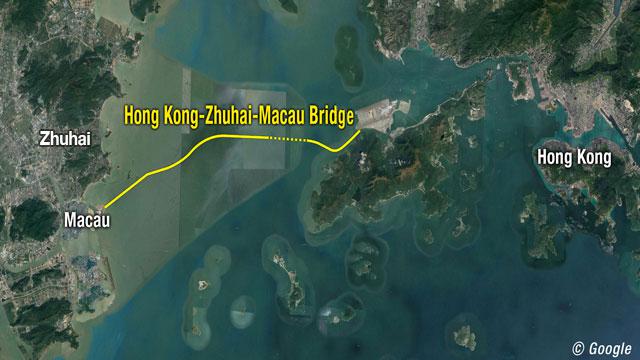
A ceremony was held in Zhuhai in Guangdong Province on Oct. 23 to mark the opening of the big bridge. President Xi Jinping was there. The Hong Kong-Zhuhai-Macau Bridge links Zhuhai in Guangdong Province with Lantau Island in Hong Kong, where the international airport is located, and Macau over a distance of 55 kilometers through the long sea bridge and an undersea tunnel. Construction work started in 2009. The cost was 18.3 billion dollars. The bridge connects Hong Kong and Zhuhai in 45 minutes by car. It used to take four hours. The bridge also cuts the travel time by ferry between Hong Kong and Macau to about 30 minutes from one hour.
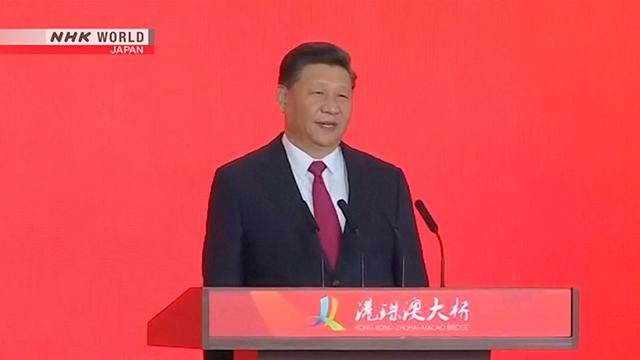
At the opening ceremony, President Xi simply proclaimed, “I hereby declare the bridge officially open,” prompting a round of applause from the officials who gathered for the occasion. It is the first time in six years that Xi came to Guangdong Province for inspetion, reflecting the hope for the giant project he himself had been promoting. Vice Premier Han Zheng, who had preceded Xi at the ceremony, said, “… we firmly believe that the opening of the bridge will further develop the special advantage of Hong Kong and Macau.” He confidently stressed the significance of the initiative.
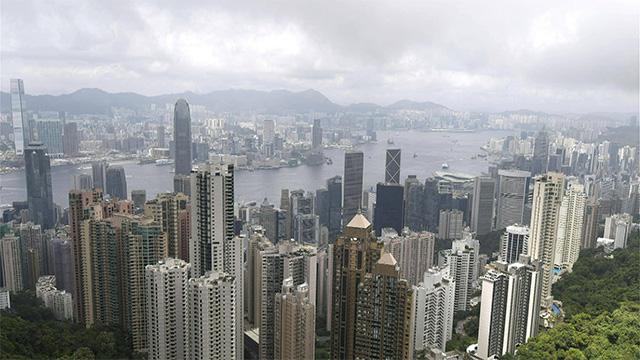
Hong Kong and Macau are special administrative regions of China with a high degree of autonomy given under the one country, two systems policy. The two cities maintain their own facilities for customs inspection and immigration control. Beginning the day after the opening ceremony, people were able to cross the bridge. Many tourists from the mainland are now visiting Hong Kong, Zhuhai and Macau directly by bus.
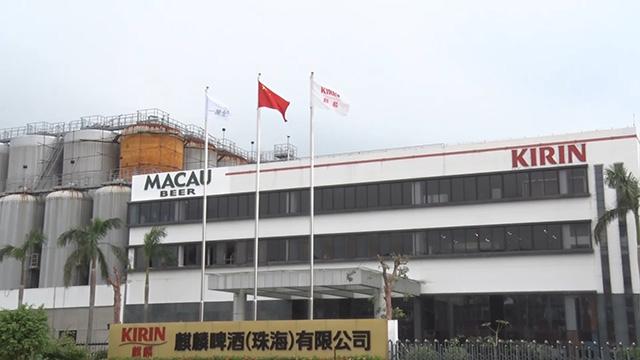
A major Japanese brewery has a plant in Zhuhai and is making beer under a local brand name. One person in marketing was expressing hope that beer sales will grow as the tide of tourism sweeps the area.
Because it now takes transportation companies in Hong Kong a little more than one hour by land instead of a whole day by ship to deliver goods, a transportation company official said, “There will be a great change coming in product distribution in the area.”
Hong Kong joining China’s high-speed rail networks
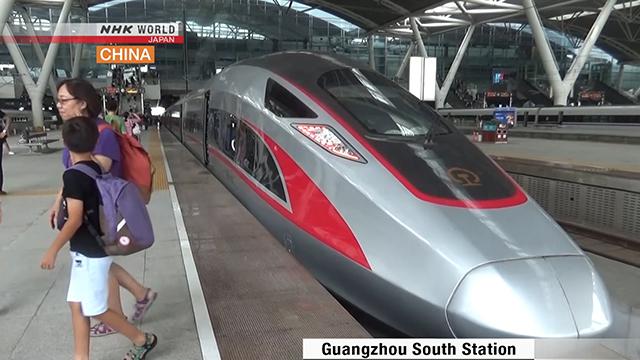
On Sept. 23, a month before the bridge-opening ceremony, a high-speed railway connecting Hong Kong and Guangzhou in Guangdong Province, a distance of 142 kilometers, began service. Trains run at top speeds of 200 kilometers an hour in Hong Kong and 350 kilometers in China. It links the newly-built West Kowloon Station near Hong Kong’s bustling entertainment area with Guangzhou South Station on the outskirts of Guangzhou City. It took more than two hours to travel between the two cities. The railway links them in a minimum of 47 minutes. Passengers from Hong Kong can travel to 44 stations, including those in Beijing and Shanghai, without changing trains. On the day the railway opened, many tourists from the mainland were taking trains at Guangzhou South Station from early in the morning, heading for Hong Kong.
We can say that the incorporation of Hong Kong into China’s 25,000 kilometers of railway networks is an event that symbolizes the integration of the region.
Chinese government pushing regional integration
The Chinese government is beefing up steps to increase the number of people working in the mainland. It’s part of an attempt to promote the integration of the people living in this area.
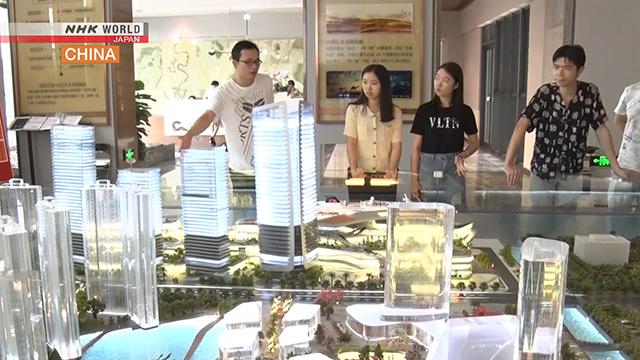
A state-run real estate development company in Guangzhou was inviting 10 students in Hong Kong and Macau to work as interns on the mainland. Local governments are paying all the students' costs, including accommodation and transportation.

Victor Lo, 26, moved from Hong Kong to Guangdong Province two years ago. He is trying to run an aquaculture farm using fish to grow vegetables. The local government is providing him with a 4,000-square-meter greenhouse and a subsidy of about 8,000 dollars a year. This is the first time for him to try his hand at farming and he hasn’t made any money yet. But there is no doubt that such strong support made him decide to settle down in the province. Next year, he will be moving to a bigger farm with more financial support. I still remember him saying, “It wasn’t all that difficult to apply for support. My dream of doing business in the mainland is coming true.”
Hong Kong concerned about “integration”
But some people in Hong Kong are getting worried about integration with the mainland. They say the influence of the central government will grow further in Hong Kong. A target of particular opposition was a facility built in West Kowloon Station on the Hong Kong side to control the flow of people in and out of the mainland. It opened after the high speed rail link went into business. Hong Kong is given its own executive power under the one country, two systems policy. But a border control post has been set up on the Chinese side of the station, just dozens of meters away from the one on the Hong Kong side.
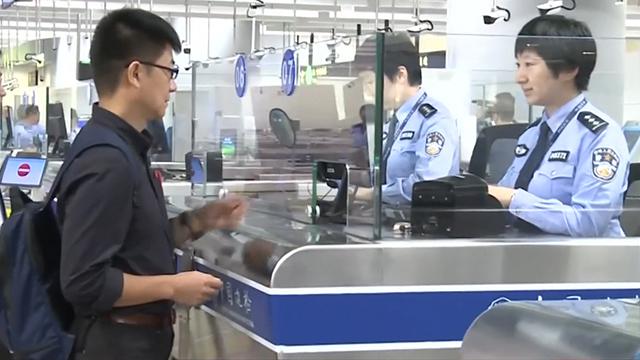
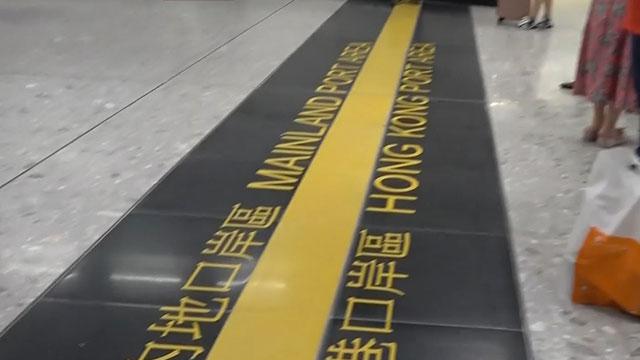
Chinese police and customs officials man the post all the time, controlling exit and entry procedures. In this area, the traditional Chinese characters used in Hong Kong have been changed into simplified characters used on the mainland. This gives the impression to people that they are in the Chinese mainland while in fact they are in Hong Kong. Looking at my passport after going through the post, I found that the entry stamp Chinese authorities gave me said “West Kowloon.”
People in Hong Kong began rising up in protest against such steps, saying, “Once we give China the executive power in Hong Kong, it would affect the one country, two systems policy in the future.” About 20 people gathered at a rally held in connection with the opening ceremony, shouting, “Hong Kong doesn’t need a high-speed railway system.” One participant said, “The influence of the Chinese government in Hong Kong has increased sharply over the past few years. I am worried that the central government’s involvement will further expand in the future.” Concern has been growing in Hong Kong that pressure from China will escalate, threatening the freedom of speech and eroding Hong Kong’s autonomy.
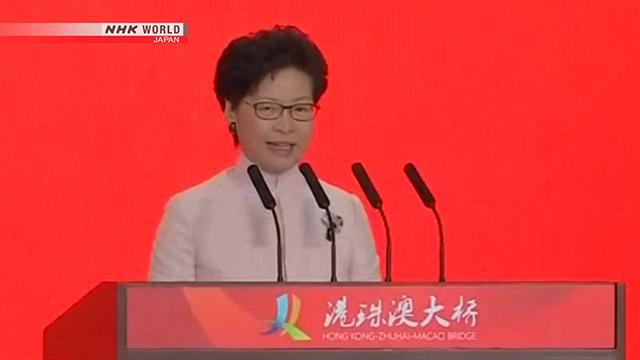
Hong Kong Chief Executive Carrie Lam said, “This is very beneficial to Hong Kong not only in terms of logistics. We can continue to cooperate successfully under the ‘one country, two systems' policy in the Great Bay Area. There should be no worries. This is what President Xi and Premier Li Keqiang say time and time again.”
Problems in Greater Bay Area Initiative China is staking its future on
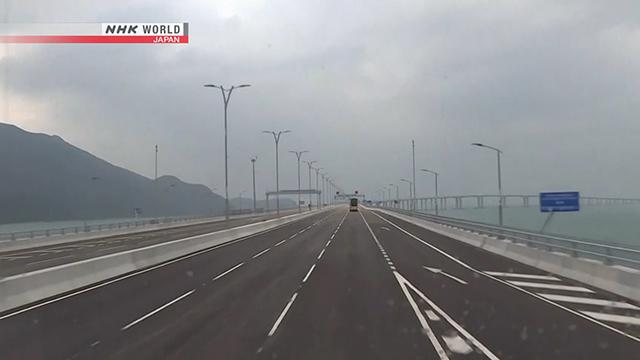
China is celebrating the 40th anniversary of its reform and opening-up policy this year. Guangdong Province, the epicenter of reform, has continued to develop. Shenzhen is thriving with the IT and high-tech industries. Guangzhou is turning itself into the center of the auto industry. The Chinese government is planning to announce details on the development of the "Greater Bay Area Initiative” in the future. But there is no doubt that it considers the initiative an important project that will take the area to the next level of development. At this point, however, it’s hard to gauge the impact of the policy. A little over 50,000 people were using the high-speed railway per day a month after it opened, in contrast with an initial estimate of 80,000. Even on the first day of business, empty seats stood out conspicuously in some of the trains heading from Hong Kong to Guangzhou, though many of those going to Hong Kong from Guangzhou were crowded.
There is a possibility that China’s plan to integrate Hong Kong may backfire. Hong Kong has served as a gateway linking the Chinese mainland with the rest of the world. If it loses its uniqueness as a result of its integration with China, the initiative itself could end up losing the merits it espouses to achieve. In the midst of speculation that the trade friction with the United States may drag on, we have to watch and see if the Greater Bay Area Initiative will prove to become an engine to fuel China’s economic growth.


